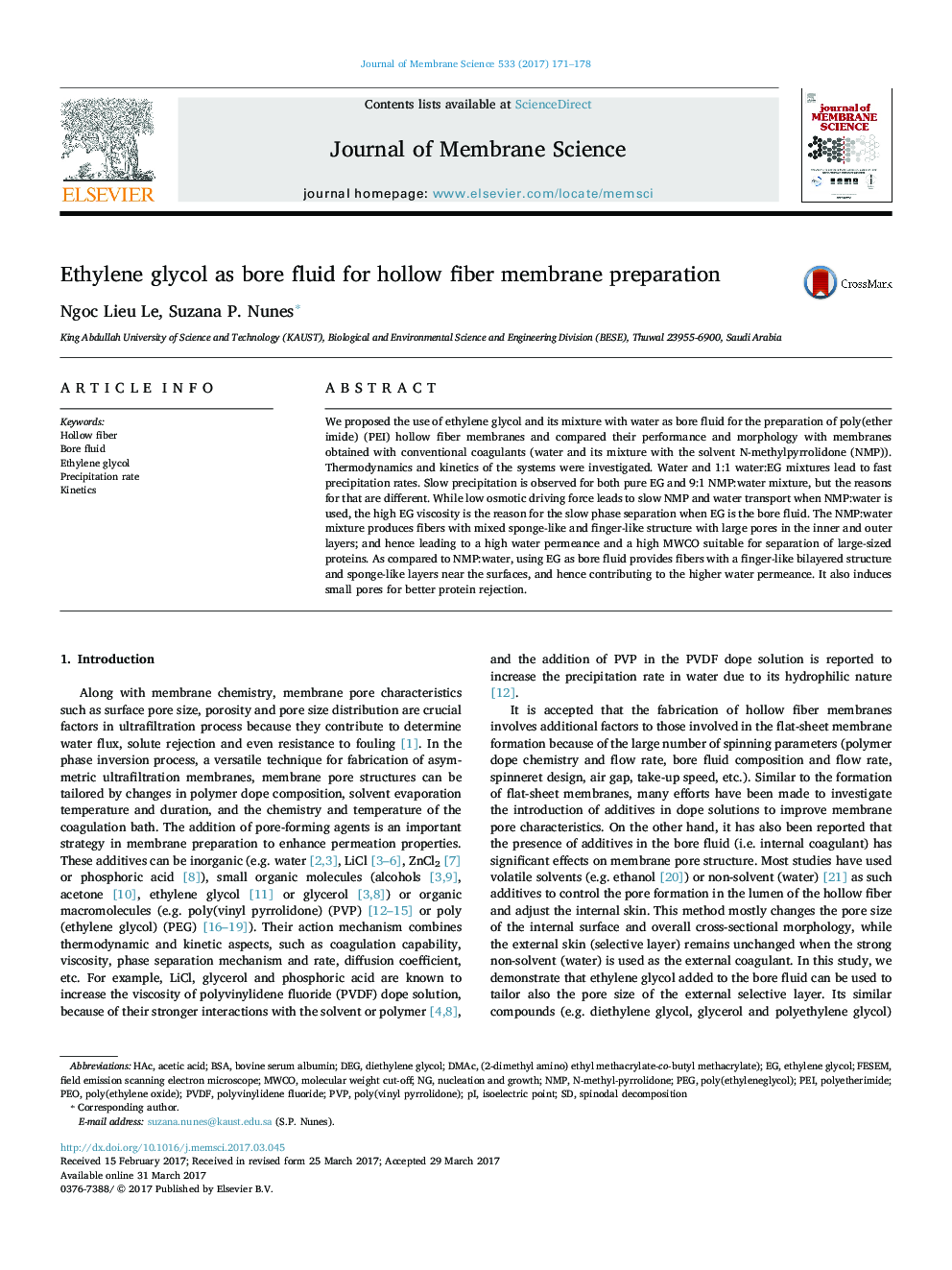| Article ID | Journal | Published Year | Pages | File Type |
|---|---|---|---|---|
| 4989002 | Journal of Membrane Science | 2017 | 8 Pages |
â¢Ethylene glycol as bore fluid for hollow fiber preparation.â¢Membranes with pores between 8 and 10 nm and permeance 370 L mâ2 hâ1 barâ1.â¢Water permeance increase with ethylene glycol content.
We proposed the use of ethylene glycol and its mixture with water as bore fluid for the preparation of poly(ether imide) (PEI) hollow fiber membranes and compared their performance and morphology with membranes obtained with conventional coagulants (water and its mixture with the solvent N-methylpyrrolidone (NMP)). Thermodynamics and kinetics of the systems were investigated. Water and 1:1 water:EG mixtures lead to fast precipitation rates. Slow precipitation is observed for both pure EG and 9:1 NMP:water mixture, but the reasons for that are different. While low osmotic driving force leads to slow NMP and water transport when NMP:water is used, the high EG viscosity is the reason for the slow phase separation when EG is the bore fluid. The NMP:water mixture produces fibers with mixed sponge-like and finger-like structure with large pores in the inner and outer layers; and hence leading to a high water permeance and a high MWCO suitable for separation of large-sized proteins. As compared to NMP:water, using EG as bore fluid provides fibers with a finger-like bilayered structure and sponge-like layers near the surfaces, and hence contributing to the higher water permeance. It also induces small pores for better protein rejection.
Graphical abstractDownload high-res image (300KB)Download full-size image
